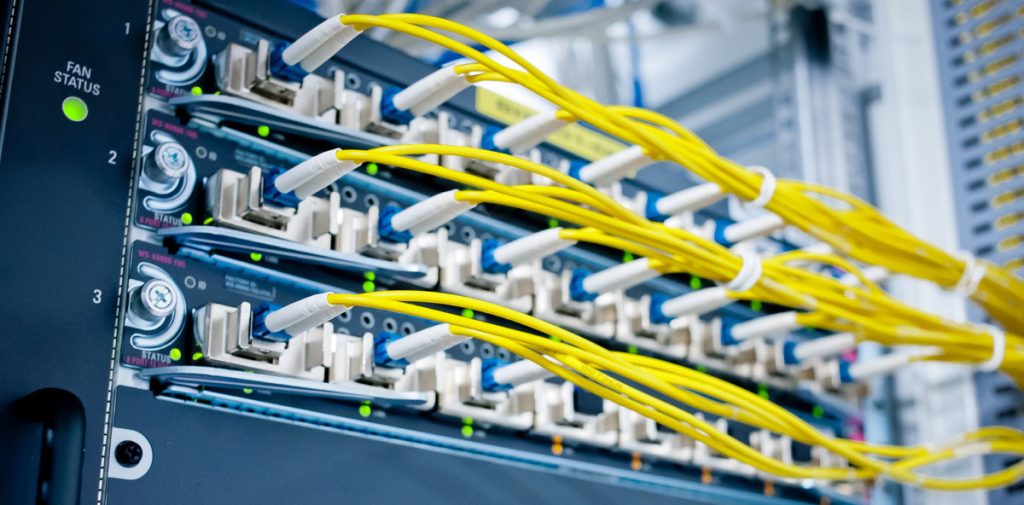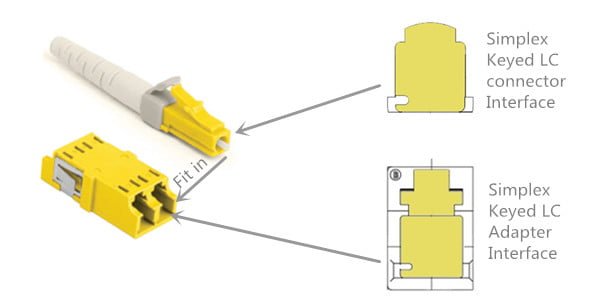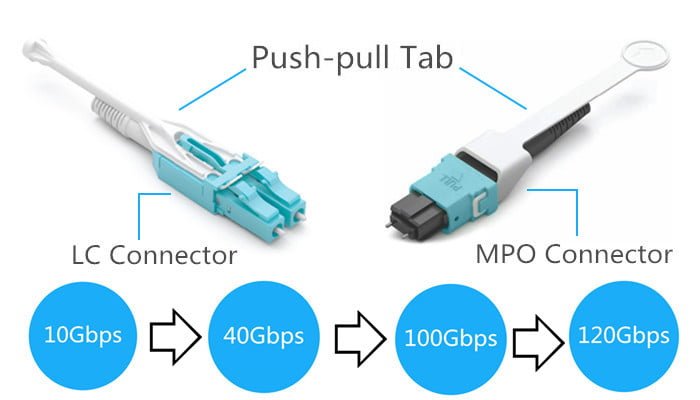How to Select Standard Fiber Patch Cable?
Fiber patch cable, also known as fiber jumper, is a key component in today’s fiber optic network. They play the role of veins in the whole fiber optic network bringing fiber optic signals between devices.
How to Select Standard Fiber Patch Cable?
During the selection of standard fiber patch cables, several questions are usually take into consideration:
- What’s the fiber type of the patch cable? The available selection are Multimode (OM1, OM2, OM3, OM4) and single-mode (OS1 and OS2).
- What’s the connector type and connector polishing type on the two ends of fiber patch cable? Currently the most commonly used fiber patch cables are usually terminated with LC, SC and MPO connectors.
- What’s the fiber count of the patch cable? Simplex (one fiber) and duplex (2 fibers) fiber patch cable are very common. For fiber patch cables terminated with MTP/MPO connector or breakout fiber patch cables. Their fiber count would be larger, sometime up to 24 fibers or more.
- What’s the material of the fiber patch cable jacket? PVC, LSZH, Armored, and OFNP are the choice of most situations.
Not All Fiber Patch Cable Are Created Equal
Now with the fiber optic cable being widely used in a variety of industries and places, the requests for fiber patch are being refined. Fiber patch cable are being required to be improved and provide more possibilities to satisfy various application environments. Actually, many specially fiber patch cable have been created to answer the market call. Here will introduce several unique but useful fiber patch cable for your references.
Bend Insensitive Fiber Patch Cable for Lower Signal Loss
Bend loss issues are always a headache problem for most fiber optic network designers and installers. Why? Cause signal loss caused by bend loss issues are really hard to handle. In addition the bend loss issues are difficult to locate. That’s why bend insensitive fiber patch cables are created. Literally, it tells us that this type of fiber patch cable is not as sensitive as other fiber patch cables. The secrets is lays on the fibers which is made of bend insensitive glass. More and more data centers and FTTH systems are tend to use these bend insensitive fiber patch cables, because they do not provide lower signal loss, but also provide a much more durable and easy to maintain networking environment. Fiber optic installer is able to save installation cost with faster installation due to easier fiber optic cable handling.

Keyed LC Fiber Patch Cable for Data Security
Keyed LC fiber patch cable, is also called secured LC fiber patch cable. This is because, the fiber optic connectors on the two end of the patch cable are specially designed LC connectors, which can ensure the data security at the mechanic level. Keyed LC fiber patch cable is identifies by the connector color. Keyed LC fiber patch cable is just a part of the Keyed LC connectivity product family. It should be used with the same colored fiber adapters or fiber adapter panels. Each color of a set of keyed LC connectivity products represents a unique keying pattern that only allows matched color mating. This is how keyed LC fiber patch cable can provide data security for fiber optic network. A previous article (Secure Fiber Optic Link With Keyed LC Connectivity Products) of my has introduce keyed LC connectivity in details, kindly follow the link on the article title if you need more information about them.

Uniboot LC Fiber Patch Cable for Easier Cable Management
Uniboot LC fiber patch cable is a fiber patch cable with two fibers wrapped in the same strand of cable. A duplex LC fiber optic connector which can provide easy polarity reversal is terminated on each end of the uniboot LC fiber patch cable. The following picture show the polarity reversal of a typical uniboot LC fiber patch cable. With less cabling space are require, better cooling is available. With easier polarity reversal, no additional tools are required. And easier cable management can be enjoyed.

HD TAB Fiber Patch Cable for Space Saving
HD (high density) TAB fiber patch cable is a fiber patch cable with its connectors attached with a push pull tab, which can provide easier finger access and cable locating. Today’s fiber optic network is increasing depended on high density which results in difficult finger access and difficult cable management. With a push-pull tab attached on the connector, problem are solved easily. The connecting and disconnection of fiber patch cables will be easier without affecting other surrounding links. Currently most HD TAB fiber patch cables available the market are terminated with LC and MTP/MPO connectors. For more information about this type of patch cable kindly visit my article: Cabling With High Density Push-Pull Tab Patch Cords.

HD Uniboot LC Fiber Patch Cable—Space Saving to the Extreme
HD uniboot LC fiber patch cable combine the advantages of uniboot LC fiber patch cable and HD TAB fiber patch cable. Combining two optical fibers in a single cable strand and attaching a push-pull tab on the connectors, HD uniboot LC fiber patch cable can minimize the required cabling spaces to extreme. It is an ideal solution for high density cabling environment.

Except the standard fiber patch cable, there are still a lot of choices which can meet the requirements of various networking environment.
